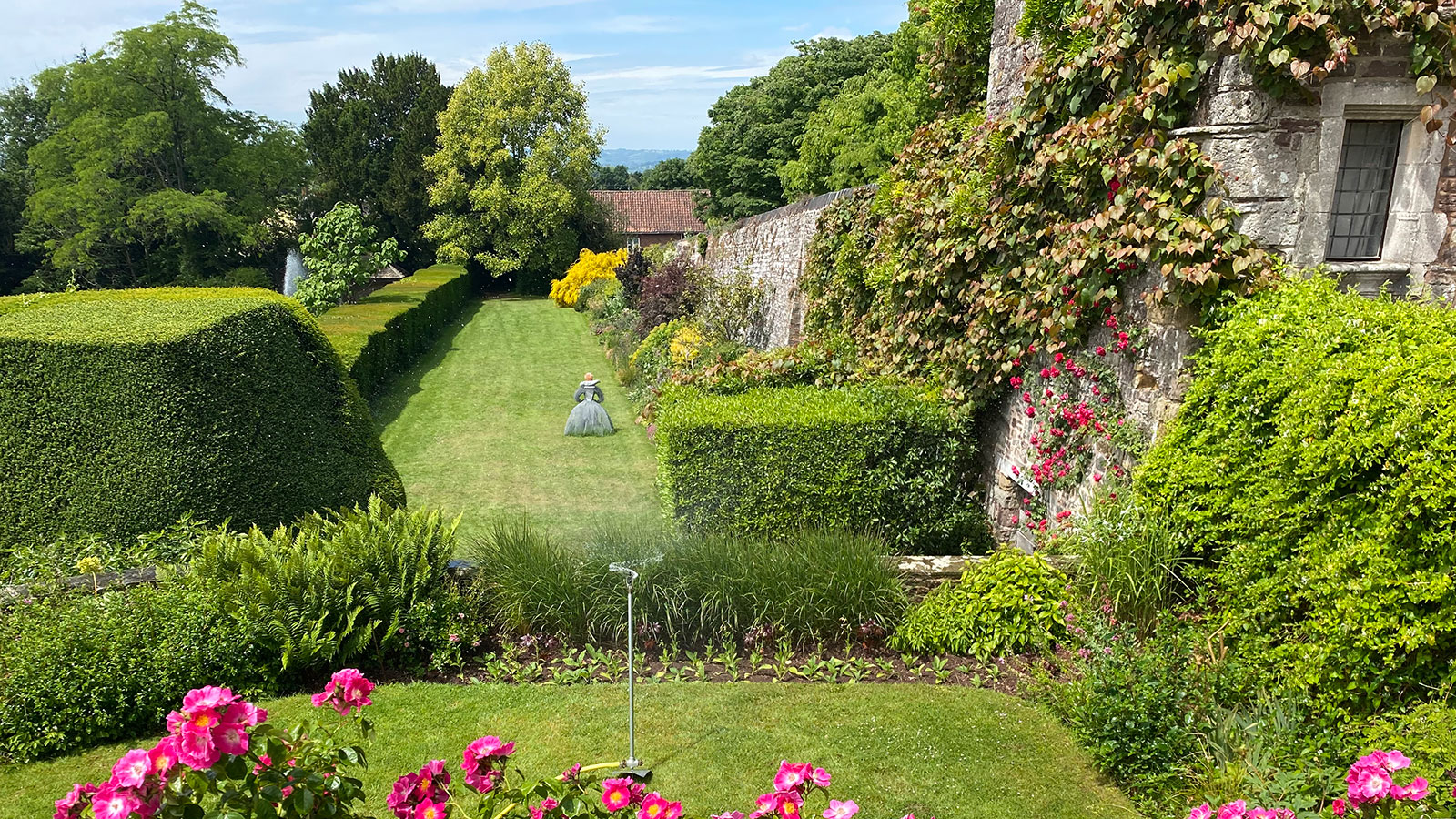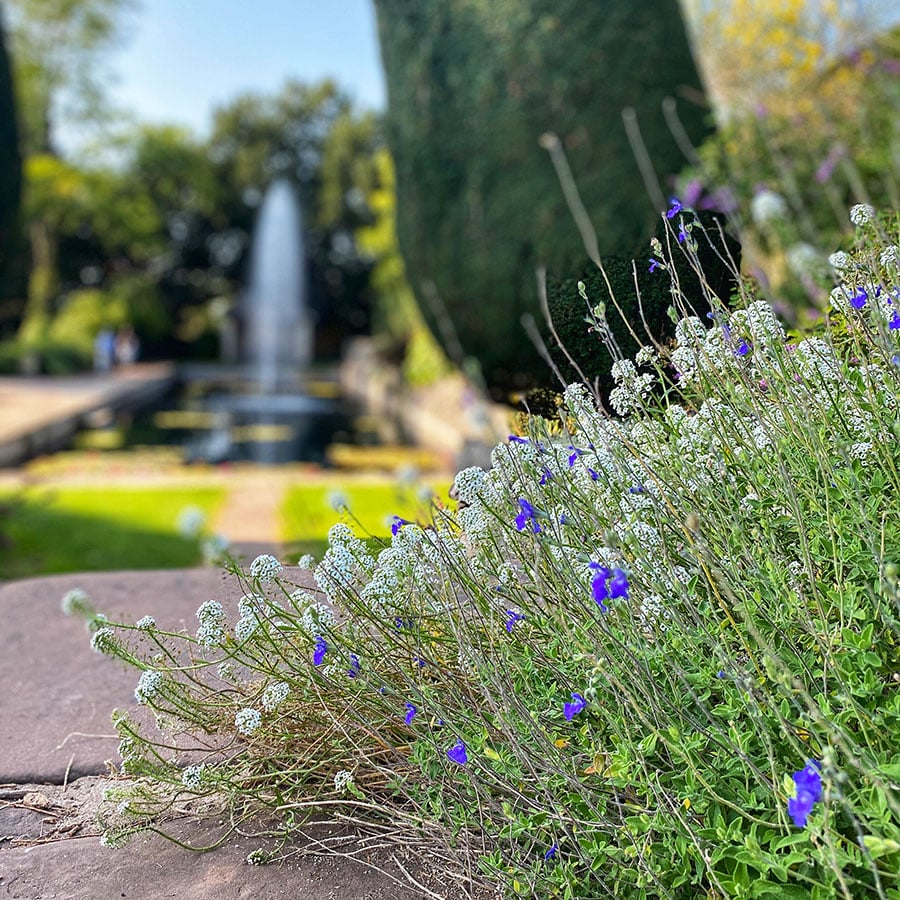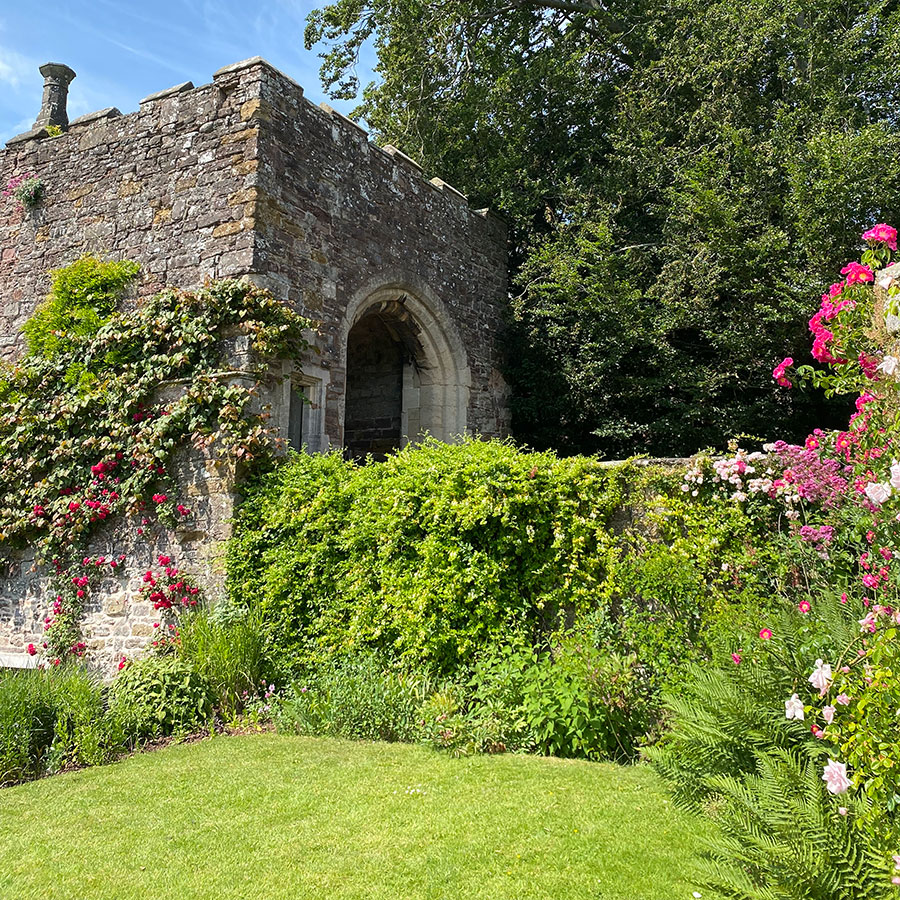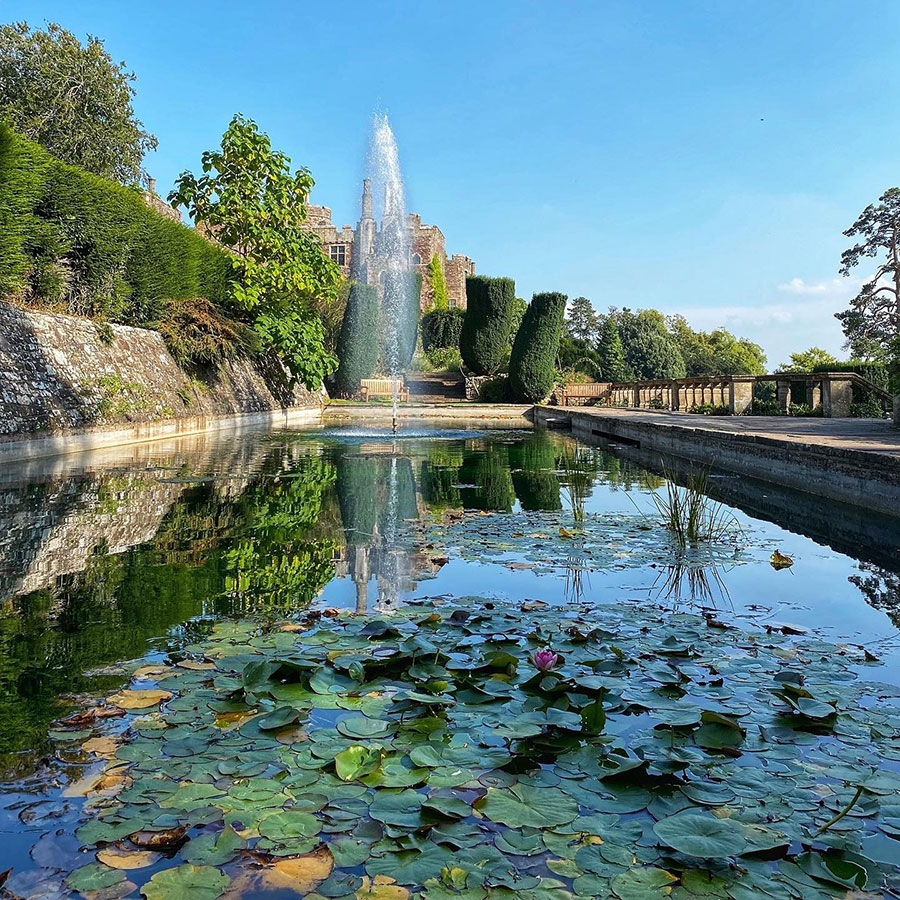
From the beginning
The Gardens


In the beginning, the walls of the Castle dropped sheer to the surrounding levels to the South.
Quite early in its history, the water from the River Severn (nearer the Castle in those days) was channeled and managed to create defensive stretches of water on this side of the Castle, and later a ditch was dug to the North side, between the Castle and the church.
The approach to the Castle was via a slope to the West, leading to what is now the Gatehouse, all that remains of the double-drawbridge and huge octagonal towers through which men had to pass to enter the Outer Bailey and approach the present Great Doors.
The Planting
Over time, successive generations have softened the stern aspect of the Castle walls with flowers, until finally the present planting of the terraces was carried out with the help of Gertrude Jekyll at the turn of the last century.
The gardens specialise in scent and the roses in particular are a delight in June. Rare plants, shrubs and trees are to be enjoyed.
“A calm oasis in a busy world”
… as one recent visitor wrote in our visitor’s book.
Evidence of earlier times can still be seen: below the sloping approach to the present gatehouse is a long “bowling green,” thought to be where Queen Elizabeth I played bowls during her stay at the Castle.
The Lily Pond
The Lily Pond was first built as a swimming pool during the time of the last Earl and his American Countess.
From here sweeping curved steps lead down to the Great Lawn on which the two remaining Culloden Pines stand. These are said to have been brought back as pine cones from the Battle of Culloden by the 4th Earl of Berkeley. The greater of the two trees is in its own sunken circle: this was because the level of the Great Lawn was raised in the 1920s to prevent flooding.

Rhines
The gardens are ringed on the South and East with rhines (pronounced “reens”), or drainage ditches.
These are fed from the River Severn and can vary in depth from a few inches to 8 or 9 feet during the winter. These rhines are still actively managed in this area of the county for agricultural purposes and to prevent flooding.
In the far south-western corner of the gardens is a small bridge with old sluice gates beneath. In earlier days, barges used to draw up here bearing deliveries to the Castle. (Berkeley Town was a thriving port with its own quay in mediaeval and Tudor times).
